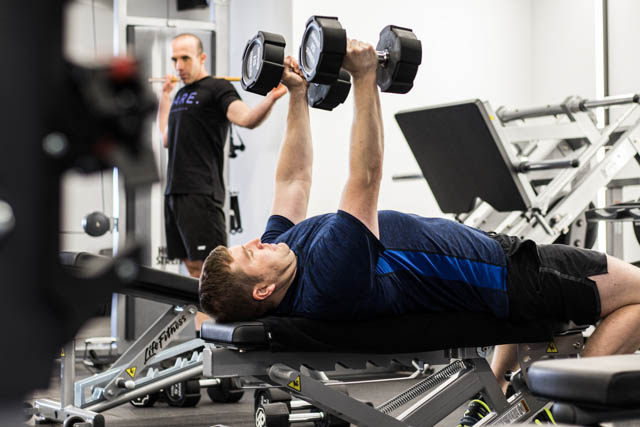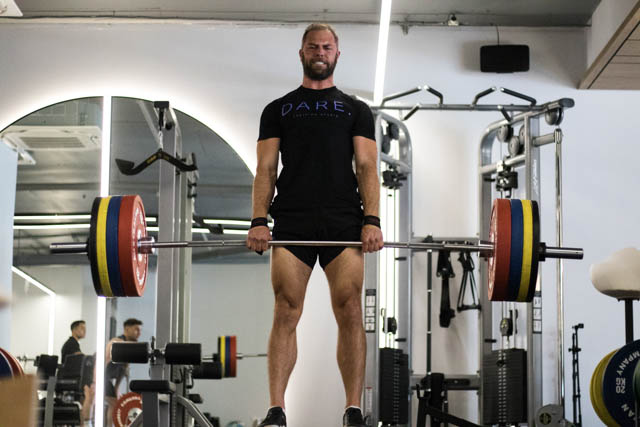Unlocking Your Full Potential: 5 Proven Muscle Growth Tips for Maximising Gains
By David OttobreDare MD
Are you ready to take your muscle growth to the next level? Unlocking your full potential is not just about hitting the gym and lifting heavy weights – it’s about following the right strategies and techniques to maximise your gains.
In this article, we’ll share coach Luke Walker’s top 5 muscle growth tips that will help you achieve the physique you’ve always dreamed of.
So, grab a pen and paper, and let’s dive into the world of muscle growth!

Understanding Muscle Growth
Muscle growth, also known as muscle hypertrophy, is the process of increasing the size and strength of your muscles. Understanding how muscle growth works is essential if you want to get bigger, leaner and stronger.
So, how does it work?
When you lift weights or perform strength exercises, you create micro-tears in your muscle fibres. These micro-tears then stimulate your body to repair and rebuild the muscle fibres, resulting in muscle growth. Essentially, you need to damage the muscles to stimulate them to repair and grow.
Alongside this, you’ll need to progressively overload the weight in order to keep pushing the muscles to grow and ensure proper rest and nutrition.
Eat Enough Protein For Muscle Growth
We couldn’t write an article on hypertrophy without mentioning protein intake.
Protein provides the amino acids necessary for muscle repair and synthesis, and without an adequate amount of protein in the diet, your body won’t have the building blocks it needs to repair and build new muscle tissue.
As a guide you should aim to get 30% of your calories from protein each day. By eating a good serve of protein at each meal you should achieve this. Good sources of protein include all animal meats, fish and eggs.
Fuelling your training with a good amount of protein each day will help you build muscle.

Utilise Strength Training
Strength training is the cornerstone of muscle growth. When you lift weights or perform bodyweight exercises, you create resistance that stimulates your muscles to adapt and grow stronger.
If you’re a newbie, you’ll notice considerable strength improvements quickly. If your muscles haven’t been stimulated in this way before, you can do almost any strength exercise and gain muscle.
However, if you’re a more experienced gym goer, you’ll probably need to work on a more specific program structured around your goals.
For hypertrophy, a combination of compound exercises and isolation exercises is ideal. Compound exercises target multiple muscle groups simultaneously, such as squats, deadlifts, bench presses, and pull-ups. Meanwhile, isolation exercises can target specific muscles for growth. These are things like leg extensions, bicep curls, tricep extensions etc. Both are ideal for muscle gain.
Using a mix of different training techniques in your routine, such as supersets, drop sets, and time under tension can also be a good combination.

Incorporate Progressive Overload into Your Workouts
Progressive overload is the key to unlocking your full muscle growth potential. By gradually increasing the demands on your muscles, you force them to adapt and grow stronger.
Here are a few ways to incorporate progressive overload into your workouts:
1. Increase the weight: Gradually increase the weight you lift for each exercise. Start with a weight that challenges you but allows you to maintain proper form. As you get stronger, gradually increase the weight in small increments.
2. Increase the reps: Instead of increasing the weight, you can also increase the number of reps you perform for each exercise. Start with a weight that allows you to perform the desired number of reps with proper form. As you get stronger, aim to increase the reps over time.
3. Increase the sets: Another way to incorporate progressive overload is by increasing the number of sets you perform for each exercise. Start with a comfortable number of sets and gradually add more sets over time. This will increase the total volume of your workout, stimulating muscle growth.
4. Decrease rest time: By decreasing the rest time between sets, you can increase the intensity of your workouts. This challenges your muscles to work harder and adapt to the increased demands, leading to muscle growth.
Get Adequate Rest and Recovery for Muscle Growth
Rest and recovery are just as important as your workouts when it comes to muscle growth. It’s during the rest and recovery period that your body repairs and rebuilds muscle fibres, leading to muscle growth.
Here are a few tips to ensure you’re giving your body enough rest and recovery:
1. Get enough sleep: Aim for 7-9 hours of quality sleep each night. Your body releases growth hormone as you sleep, which is essential for muscle repair and growth. Lack of sleep can hinder muscle growth and recovery.
2. Take rest days: Allow yourself at least one or two rest days per week to give your muscles time to recover. On these days, focus on light activities or active recovery, such as stretching or low-impact cardio.
3. Manage stress: Chronic stress can hinder muscle growth and recovery. Find healthy ways to manage stress, such as practising mindfulness, engaging in hobbies, or spending time with loved ones.
4. Listen to your body: Pay attention to how your body feels and adjust your training accordingly. If you’re feeling excessively fatigued or experiencing pain, take a step back and allow for more rest and recovery.
Remember, muscle growth occurs during the recovery phase, so don’t underestimate the importance of rest and recovery in your muscle-building journey.
5. Don’t Rush Your Muscle Growth Journey
Building muscle can be a long process. If you rush, you might make common mistakes like injuring yourself, overtraining and giving up if you don’t see progress quickly enough.
When it comes to muscle growth, here are a few mistakes to watch out for:
- Neglecting proper form: Performing exercises with improper form not only increases the risk of injury but also hinders muscle growth because the tension is greatly reduced from the target muscle. Always prioritise proper form to maximise muscle growth and minimise the risk of injury.
- Overtraining: While it’s important to challenge your muscles, overtraining can hinder muscle growth and lead to fatigue and injury. Give your muscles enough time to rest and recover between workouts.
- Not eating enough: To support muscle growth, you need to consume enough calories and nutrients. Make sure you’re eating a well-balanced diet that provides enough protein, carbohydrates, and healthy fats.
- Not tracking progress: Tracking your progress is essential to ensure you’re making gains and to identify areas for improvement. Keep a workout journal, take progress photos, and regularly measure your strength and muscle mass.
Start building muscle today
Remember, building muscle takes time and dedication. There’s no better time to start than today!
Stay consistent, be patient, and enjoy the journey. With these tips in your arsenal, you have everything you need to transform your physique and make those gains. So, go out there, hit the gym, and let your muscles grow.
Contact us now to explore DARE.
